Research Article - (2021) Volume 9, Issue 12
The Major Association between Smartphone Use and Educational Performance: A Case of Students in a Bharath university
*Correspondence: AR Bharathi, Department of Nursing, Bharath Institute of Higher Education and Research, Selaiyur, Chennai, Tamil Nadu, India, Email:
Abstract
The concept and ideas of the adolescent with excessive mobile phone use leads to stress College student are the most rapid adopters of cell phone technology and research suggests association between cell phone use and their health and academic achievement with the direction of the latter association being party determined by the nature of task a student is engage in when using the cell phone. This chapter deals with the brief description of varied steps undertaken by the investigator for the study. Father illiterate were 4(13%) and primary were 2(2%) and secondary were 21(70%) and degree etc. were 3(10%).mother illiterate were 6(20%) and primary were 4(13%) and secondary were 19(64%) and degree were 1 (3%).It includes the research approach, research design, variables, setting of the study, population, sample and sample techniques development and description of the tool, data collection procedure and plan for the data analysis.Keywords
Populations, Cell phones, Stress and mental Disorder, Study, Health and academic achievementIntroduction
The addition to use of mobile phone for communication people used cell phone for many features such as games access to the internet and social networks messaging, alarm, navigation. The concept and ideas of the adolescent with excessive mobile phone use leads to stress College student are the most rapid adopters of cell phone technology and research suggests association between cell phone use and their health and academic achievement with the direction of the latter association being party determined by the nature of task a student is engage in when using the cell phone. Stress is a procure or tension exerted on a material object a state of mental or emotional strain or demanding circumstances. Addiction of mobile phone is mainly observed among the college students as they have the urge to always stay connected with their friends and peer to know about the latest happing among their friends [1].
The students seen to be addicted to their cell phones with 64% of students observed on campus interacting with their device one way or another common health effects of cell phones amongst college students. The fact or condition of being addicted to a particular substance or activity is called addiction The two categories of addiction involve either substance addiction such as mobile phone addiction mobile phone addiction one of the forms of compulsive use of a mobile phone by adolescents across the world. A new kind of health disorders in this category among adolescent. 'Cell phone addiction health policy makers globally to think on this rapidly emerging by this high cell phone engagement and the current paper will we meta-analysis to discuss their addictive behavior. In recent years, the use of cell phones has played a vital role in communication across the globe; citizens ol the United States, like people in other countries, are consumed in the technological revolution. It is hard for members of generation who were born between the early 1980s and the early 2000s, to imagine a time to instant and constant communication was not a main focus for them socially [2].
A generation ago people left their home without any form of electronic device; made plans in person; wrote personal, hand-written letters ’’more than 90 percent of Americans adults have a cell phone some kind, and for the people under the age of 44, that number is closer to 97 percent.” For those with phones, particularly smart phones that allow individuals to instantly connect to anyone via the world wide web, personal, face-to-face connections seem to be disappearing at a rapid pace. In reaction, the McMillan family, of Ontario, Canada, conducted a social experiment were they “instituted a ban on technology invited after 1986.” This year-long experiment was notdesigned to punish the children, but rather to show then a simpler way of life, before the world was instantly connected. Over the past several decades, the number of cell phones subscriptions in the United States has grown significantly as people’s reliance on this technology has increased. There were 681,000 cellular phone subscriptions in the United States in 1986 and 326.4 million in December 2012. As late as December 2002, there were no houses that relied solely on wireless devices, but in 2012, 35.8 percent U.S. households were wireless only. Throughout this study, we are tired to address the questions related to mobile addiction and analysis its consequent of level of stress. The mobile phone is a modern day invention which has managed to reach many parts of the world enabling tele communication across areas where it was not possible before .In the year 2000 there estimated 500million mobile phone users worldwide [3].
Today there is about 3.3billion uses. The use of mobile phone among college students is increasing dramatically. It is an intended need which is necessary to increase the awareness of the negative effects of excessive phone use in the day to day life of college students. Hence it requires the assessment of knowledge and attitude regarding the level of stress on using mobile phones. Prevalence of mobile phone over use depends largely on definition and thus the scales used to quantify a subject’s behaviors. Two scales are in use, the 20-Item self-reported problematic use of mobile phones (PUMP) scales, and the mobile phone problem use scale (MPPUS), which have been used both with adult and adolescent populations. There are variation in the age, gender, and percentage of the population affected problematically according to the scales and definitions used. The prevalence among British adolescents aged 11-14 was 10%. In India, addiction is stated at 39-44% for this age group. Under different diagnostic criteria, the estimated prevalence ranges from 0 to 38%, with self-attribution of mobile phone addiction was 4.9-10.7% in Korea, and is now regarded as a serious public health issue.
Behaviors associated with mobile-phone addiction differ between genders. Women are more likely to develop addictive mobile phone behavior than men. Men experience less social stress than women and use their mobile phones less for social purposes. Older people are less likely to develop addictive mobile phone behavior because of different social usage, stress, and greater selfregulation [4].
Methodology
This chapter deals with the brief description of varied steps undertaken by the investigator for the study. It includes the research approach, research design, variables, setting of the study, population, sample and sample techniques development and description of the tool, data collection procedure and plan for the data analysis.
Research approach
The research approach was selected as a quantitative approach.
Research design
A descriptive research design was adopted to assess the level of stress regarding mobile addiction among college students at selected college at Chrompet.
Sample
The samples of this study were college students with the age group (18-20) years were available during the time of data collection at Bharath University, Tambaram
Sample size
A sample size of 30 college students with 18-20years selected for this study.
Sampling technique
Non probability convenience sampling techniques were used to select the samples.
Inclusion criteria
Students who are all studying at Bharath University
Students who are all willing to participate in this study
Exclusion criteria
Subjects those who are not present during the time of data collection
Development and description of tool
The self-structured questionnaire consists of section A and B.
Section A: Socio demographic details such as age, educational status, educational status(Mother, Father),type of family living, occupational status(Mother, Father),economic status of parents(Father, Mother),place of residence ,year of present graduation, number siblings in the family, pocket money per month.
Section B: Self structured scale. It is used to assess the level of stress among college students. It consists of Yes/No questions.
Pilot study: Pilot study is a trial run for the main study to assess the level of stress.
The main objective of the pilot study is to help the researcher to become familiar with the use of tool and to find out the difficulties of main study .this study was conducted after getting a formal permission from the Department. It was conducted for a period of one week. Sample of 10 college students were selected by nonprobability convenience sampling technique .informed consent was obtained from the college students before collection of data. Data were collected from the college students by administered self-structured questionnaire to assess the level of stress.
Procedure for Data Collection: This study was conducted at Bharath University, BIHER, a formal permission from department. This investigators were sustained data from college students, who are selected for the study. The main study was conducted in Bharath University consist of 60 college students from the total investigation selected 30 students. The investigator was obtained consent to participate in the study. They assured that their responses and confidential will be used only for the research purpose.
The self-structured questionnaire were administered to them were asked to give appropriate answer for all statement to fide out the stress among college students.
Plans for data analysis: Demographic variables in categories were given in frequencies with their percentages.
Level of stress score regarding mobile addiction were given in frequencies with their percentage.
Results
Data analysis is the method of organizing data in such a way that the research questions can be answered. Interpretation is the process of making sense of results and of examining the implication of the findings with a border contacts. This chapter deals with the analysis and interpretation of data collected from subjects with mobile addiction. The data collected was edited, tabulated, interpreted and findings obtained were presented in the form of tables and diagrams represent the following headings.
Section A: Frequency and percentage of demographic variables among college students.
Section B: Level of stress among college students regarding mobile addiction.
Table1: Description of demographic variables.
| S.no | Demographic variables | Frequency | Percentage% |
|---|---|---|---|
| 1 | AGE | ||
| 18 years | 7 | 23% | |
| 19 years | 15 | 50% | |
| 20 years | 8 | 27% | |
| 2 | B.SC (NURSING) | 30 | 100% |
| 3 | Educational Status of the | 4 | 0.13 |
| Father & Mother | |||
| A) Illiterate | |||
| B) Primary | 2 | 0.07 | |
| C) Secondary | 21 | 0.7 | |
| D) Degree | 3 | 0.1 | |
| MOTHER | 6 | 0.2 | |
| A) Illiterate | |||
| B) Primary | 0.13 | ||
| C) Secondary | 19 | 0.64 | |
| D) Degree | 1 | 0.03 | |
| 4 | Type of Family Living | 27 | 0.9 |
| A) Nuclear | |||
| B) joint family | 3 | 0.1 | |
| 5 | Occupational Status of the | 29 | 0.97 |
| FATHER | |||
| A) employee | |||
| B) un employee Occupational Status of the Mother | 1 | 0.03 | |
| A) employee | 6 | 0.2 | |
| B) un employee | 24 | 0.8 | |
| 6 | Economic Status of the | 20 . | 0.67 |
| Father | |||
| A) above 10000 rs | |||
| B) below 10000 rs | 9 | 0.3 | |
| C) nil | 1 | 0.03 | |
| Economic Status of the | - | - | |
| Mother | |||
| A) above 10000 rs | |||
| B) below 10000 rs | 6 | 0.2 | |
| C) nil | 24 | 0.8 | |
| 7 | Place of Residence | 10 | 0.33 |
| A) urban | |||
| B) rural | 20 | 0.67 | |
| 8 | Year of Present | 10 | 0.33 |
| Graduation | |||
| A) 2nd year | |||
| B) 3rd year | 20 | 0.67 | |
| 9 | No of Siblings | 11 | 0.37 |
| A) 1 | |||
| B) 2 | 11 | 0.37 | |
| C) 3 | 4 | 0.13 | |
| D) Nil | 4 | 0.13 | |
| IO. | Pocket Money | 15 | 0.5 |
| A) 100-300 | |||
| B) 400- 600 | 11 | 0.37 | |
| C) 700- 1000 | 3 | 0.1 | |
| D) Nil | 1 | 0.03 | |
Table 1 show the distribution of population who belongs to 18 years was 7(23%) and 19 years were 15(50%) and 20 years were 8(27%). according to education 30(100%). According to their parents education Father illiterate were 4(13%) and primary were 2(2%) and secondary were 21(70%) and degree etc. were 3( 10%).mother illiterate were 6(20%) and primary were 4(13%) and secondary were 19(64%) and degree were 1 (3%). According to their type of family living Nuclear family were 27(90%) and joint family were 3(10%). according to occupational status of parents. Father employee were 29(97%) and unemployed were 1(3%). Mother employees were 6(20%) and employed were 24(80%). According to their economic status, Father above 10,000rs was 20(67%) and below 10,000rs was 9(30%) and nil were 1 (3%). Mother above 10,000rs was 0 and below 10,000rs was 6(20%) and nil were 24(80%). according to their place of residence Urban were 25(83%) and rural were 5(17%). Distribution of population according to their ear of present graduation 2nd year were 10(33%) and 3rd year were 20(67%). according to their number of siblings. No of siblings 1 were 11(37%) and 2 were 11 (37%) and 3 were 4(13%) and nil were 4(13%). according to pocket money. Rs 100-300 were 15(50%) and RS400-600 were 11(37%) and RS700-1000 were 3(10%) and Nil were 1(3%).
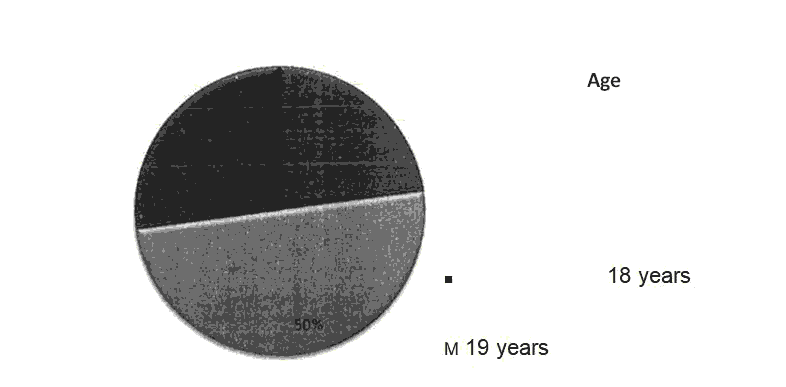
Figure 1: Frequency and percentage distribution of the population according to their age.
20 years FIG 4.1 shows the distribution of population. The population who belongs to 18 years was 7(23%) and 19 years were 15(50%) and 20 years were 8(27%).
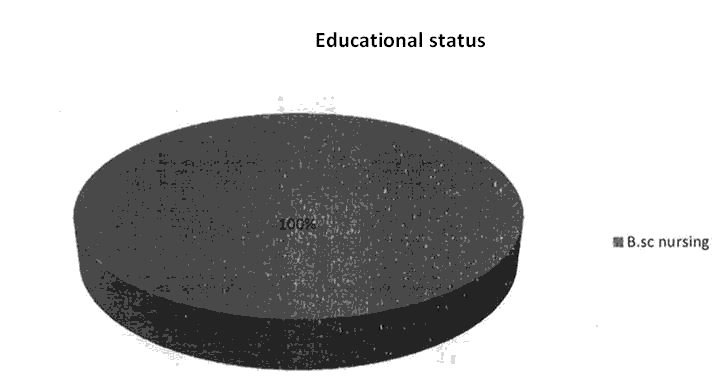
Figure 2: Frequency and percentage distribution of population according to the education wise.
FIG 4.2- show that the distribution of population according to education 30( 100%)
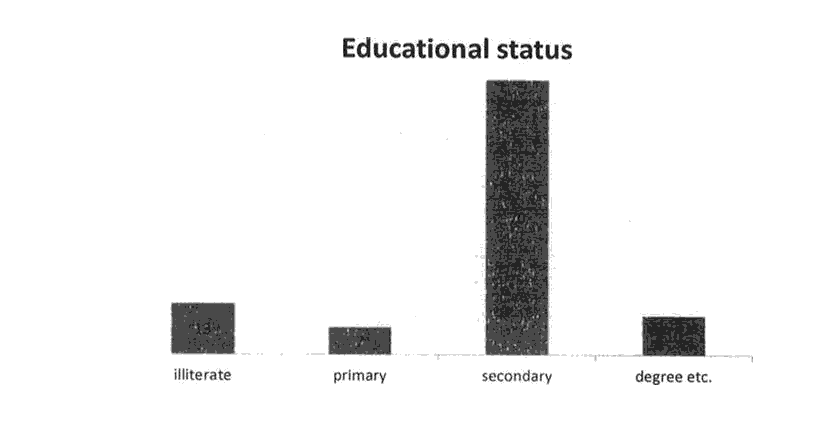
Figure 3: Frequency and distribution of population according to the educational status of the parents.
Fig 3 shows the frequency and distribution of population. Father illiterate were 4(13%) and primary were 2(2%) and secondary were 21(70%) and degree etc. were 3(10%).mother illiterate were 6(20%) and primary were 4(13%) and secondary were 19(64%) and degree were 1 (3%).
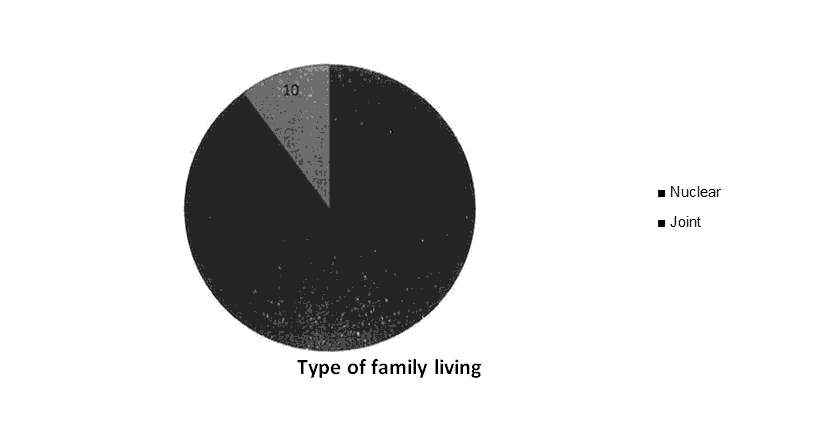
Figure 4: Frequency and percentage distribution of population according to their type of family living.
Fig -4 shows the frequency and distribution of population according to the type of family living. Nuclear family was 27(90%) and joint family were 3(10%).
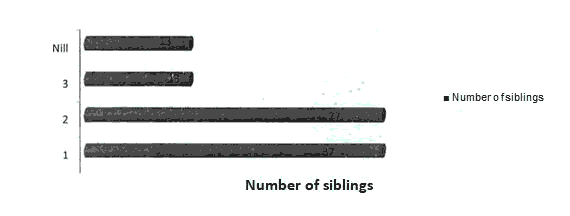
Figure 5: Frequency and distribution of population according to their family occupational status.
Fig 5: shows that frequency and distribution of population according to occupational status of parents. Father employee were 29(97%) and unemployed were 1(3%). Mother employee were 6(20%) and employed were 24(80%).
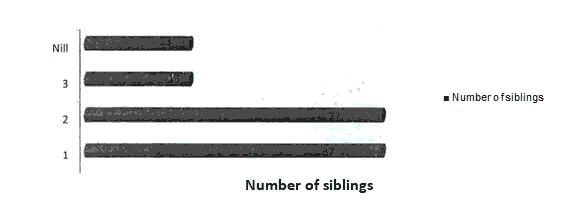
Figure 6: Frequency and percentage distribution of population according to their number of siblings.
Fig 6- shows that the frequency and percentage distribution of population according to their number of siblings. No of siblings 1 were 11(37%) and 2 were 11 (37%) and 3 were 4(13%) and nil were 4(13%).
Table 2: Frequency and distribution of samples according to level of stress.
| S.NO | Level of stress score | Frequency | Percentage |
|---|---|---|---|
| 1 | Mild | 5 | 0.17 |
| 2 | Moderate | 11 | 0.36 |
| 3 | Severe | 14 | 0.47 |
Table3: Scoring scale.
| S.no | Level of stress | Score |
|---|---|---|
| 1 | Mild | 44200 |
| 2 | Moderate | 44324 |
| 3 | Severe | 44451 |
Table 3- shows that distribution of subjects according to level of stress. Mild were 5(17%) and moderate were 11(36%) and severe were 14 (47%).
Discussion
Our study results that the description of population. The population who belongs to 18years was 7(23%) 19 years were 15(50%) and 20 years were 8(27%). Distribution of population according to education 30 (100%).Frequency and distribution of population father illiterate were 4(13%) primary were 2(2%) secondary were 21(70%) and degree etc., Were in illiterate mother 3(10%) were in primary 4(13%) secondary were 19(64%) and degree were 1(3%). According to the type of family living nuclear family were 27(90%) and joint family were 3( 10%).According to occupational status of the parents. Father employee were 29(97%) and unemployed were 1(3%).Mother employee were 6(20%).According to economic status of parents were father salary above 10,000rs were 20(60%) below 10,000rs were 9(27%) and nil were 1(3%).Mother salary above 10,000 were 0 and below 10,000rs were 6(20%) and nil were 24(80%).According to the place of residence urban were 25(83%)and rural were 5(7%).According to the year of present graduation 2nd year were 10(33%) and 3rd year were 20(67%).According to pocket money RS 100-300 were 15(50%) RS 400-600 were 11(37%) and RS 700-1000 were 3(10%) and nil were 1(3%) [5].
The findings of our study consistent with the study which is conducted by chao,2012; Giancola, Grawitch, Borchert, 2009 have conducted a study on demographic variables among college students. The total number of 50 students is selected. The students age group of 18-20 were 20(40%) 21-22 years were 18(36%) and 23-25years were 12 (24%).According to the type of family living were joint 10(20%) and nuclear family were 10(80%).According to the place of residence rural were 12(24%) urban were 28(56%)and slum were 10(20%). Our study results that the level of stress mild were 5(7%) moderate were 11(36%) and severe were 14(47%). The findings of our study consistent with the study which is conducted by Nastaran Norouzi Parashkouh, Leila Mirhadian et al., 2016.The results indicate that 3 out of 55 respondents(5.45%) have severe level of addiction ,30 out of 55 respondents (54.54%) have moderate level of addiction and out 22 Out of 55 respondents (40%) have mild level of addiction.
This is the most creative part of this study. This chapter gives a brief account of the present study including summary, findings and conclusion draw from the finding, limitation, recommendation, and nursing implication. Among the college students who belongs in 18 years was 7(23%) and 19 years were 15(50%) and 20 years were 8(27%). According to educational status BSc nursing 30(100%). According to their parents education Father illiterate were 4(13%) and primary were 2(2%) and secondary were 21(70%) and degree etc. were 3(10%).mother illiterate were 6(20%) and primary were 4( 13%) and secondary were 19(64%) and degree were 1 (3%). According to their type of family living Nuclear family were 27(90%) and joint family were 3(10%). According to occupational status of parents Father Employee were 29(97%) and unemployed were 1(3%). Mother employees were 6(20%) and employed were 24(80%).According to their economic status, Father above 10,000rs was 20(67%) and below 10,000rs was 9(30%) and nil were 1 (3%). Mother above 10,000rs was 0 and below 10,000rs was 6(20%) and nil were 24(80%). According to their place of residence Urban were 25(83%) and rural were 5(17%). Distribution of population According to their year of present graduation 2nd year were 10(33%) and 3, d year were 20(67%). According to their number of siblings 1 were 11(37%) and 2 were 11 (37%) and 3 were 4(13%) and nil were 4(13%). According to pocket money Rs 100-300 were 15(50%) and RS400-600 were 11(37%) and RS700-1000 were 3(10%) and Nil were 1(3%) [1].
Conclusion
As the conclusion, stress is the combination of the physiological, psychological and behavioral reactions .Our study is conducted among students in Balaji hospitalcollege of nursing to investigate the level of stress and recommend suitable and appropriate actions that can be taken to overcome the problem. The study concluded that the level of stress is assessed by selfstructured stress scale, we can decrease the stress level.so researcher should educate the college students about the effects of stress. This chapter enlightens the importance of their research and reveals the effects of stress among college students[3].
Funding
No funding sources
Ethical Approval
The study was approved by the Institutional Ethics Committee.
Conflict of Interest
The authors declare no conflict of interest.
Acknowledgments
The encouragement and support from University, Chennai, India is gratefully acknowledged for providing the laboratory facilities to carry out the research work.
References
- Vilas, B Gaikar, Bharat M Joshi, Jaywant Bhadane, and Mhatre Nilesh S, et al. "An Impact of Covid-19 on Virtual Learning: The Innovative Study On Undergraduate Students Of Mumbai Metropolitan Region." Acad Strat Managem J 20 (2021): 1-19.
- Al-Furaih, Suad AA, and Al-Awidi Hamed M. "Fear of missing out (FoMO) among undergraduate students in relation to attention distraction and learning disengagement in lectures." Edu Info Technolog 26, (2021): 2355-2373.
- Qutishat, Mohammed, Lazarus Eilean Rathinasamy, Razmy A Mohamed, and Packianathan Samson. "University students’ nomophobia prevalence, sociodemographic factors and relationship with academic performance at a University in Oman." Int J Afric Nurs Sci 13 (2020): 100206.
- Essel, Harry Barton, Vlachopoulos Dimitrios, and Tachie-Menson Akosua. "The relationship between the nomophobic levels of higher education students in Ghana and academic achievement." Plos one 16, (2021): e0252880.
- Fozdar, Bharat Inder, and Kumar Lalita S. "Mobile learning and student retention." Int Rev Res Open Dist Learning 8, (2007): 1-18.
Author Info
Department of Nursing, Bharath Institute of Higher Education and Research, Selaiyur, Chennai, Tamil Nadu, IndiaCitation: AR. Bharathi The Major Association between Smartphone Use and Educational Performance: A Case of Students in a Bharath university, J Res Med Dent Sci, 2021, 9(11): 1-7
Received: 01-Dec-2021 Accepted: 15-Dec-2021 Published: 22-Dec-2021
